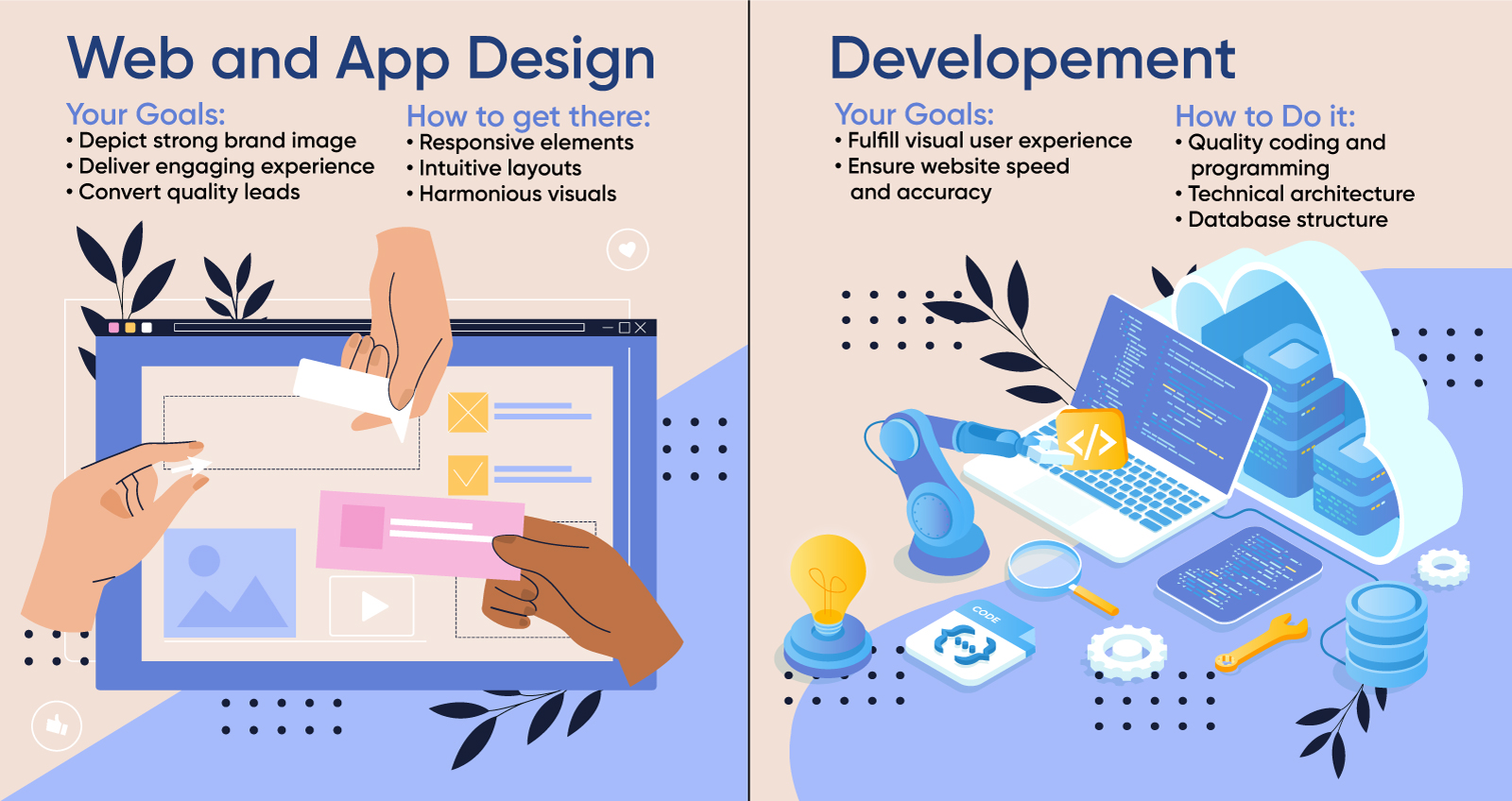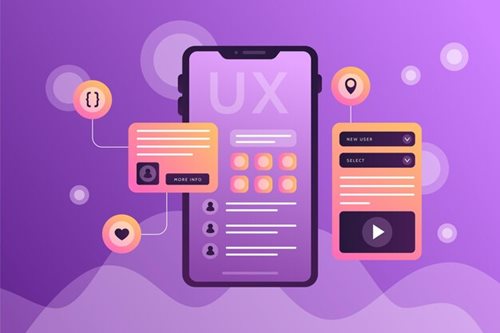Get your free consultation today!
Share with your Colleagues
Categories
ROI Calculator
Moonstone Interactive is the only San Francisco Bay Area web design firm and Internet Marketing expert that offers a free online ROI Calculator
Author: Jason Herz

A user's experience with a company's website can influence how they engage with the brand. A good impression generates more engagement, trust, leads, and sales. Meanwhile, a bad experience makes users leave the site or less likely to return. It could even drive them to check alternatives instead! So, companies need to focus on giving users the best possible experience with the website from the first-page view.
At the very least, they need to ensure these three factors are present on its website:
- Clear communication of brand essence
- Easy, intuitive user interface
- Accessible and navigable features
Design and Development must work in harmony if a website is to succeed. Web Design creates the brand image and appeal of the site and facilitates the user experience. Web Development implements the design as part of a user-friendly interface. It also builds the online functions that deliver a great user experience, including accessibility capabilities. Let's take an in-depth look at how this harmony comes to life.
Web Design and Web Development Roles
Which is most important to building a top-class website: Design or Development? The answer is both. Both functions play a diverse role in creating a high-performing website. Without one or the other, a website is sure to fail.
- Design. At its core, Design elevates the user experience through responsive elements, intuitive layouts, and harmonious visuals. Web Design delivers visual creativity that captures the attention and appeals to emotions. Design communicates the brand essence, clarifies information, and simplifies usability.
A top-performing website delivers an engaging user experience. The website compels users to stay as long as possible every visit, stimulating the buyer's journey and converting visitors into quality leads. The designer's role is to depict the brand image and differentiation throughout the user experience. - Development. Development is a technical field. It utilizes complex coding and programming languages to enable design concepts. Development also creates the foundation for reliability, quality, and speed with industry best practices in technical architecture, database structure, and quality code.
Developers build these core parts of a website to fulfill the visual user experience. They ensure that a website functions with speed and accuracy.

As demonstrated, website creation needs both the UI/UX (Design) and the Development to work together to meet the user's needs.
But that's easier said than done.
Web Design and Development have different responsibilities and often fall into separate organizational silos. While it makes sense from an organizational standpoint, it may hinder cooperation efforts. In particular, a critical point in the creation of the website, the design hand-off, can break down without good communication.
The Hand-off Gap in Website Building
The design-development hand-off is an important step in the creation of any website. Upon approval of the Website Design phase, the designer(s) passes the final graphic files and implementation responsibility to Development. This step is critical because of the information transfer that occurs or, more often than not, because of the information transfer that doesn't happen.
Simply handing off files won't guarantee a mutual understanding of how to build the new website.
Without good communication, achieving website creation goals will be harder. Design and Development can't produce a cohesive, purpose-driven, user-friendly website when their communication is shallow and incomplete. So, we shouldn't look at the hand-off as a single event. We should consider it a series of steps geared toward sharing information and insights from both sides.
Moonstone Interactive recommends a series of communication-centric adjustments to the traditional website creation process. With formal communication and validation steps throughout the entire project, you can ensure meaningful interactions and prompt course corrections if needed.
Design and Development with Purpose
A common purpose and aligned goals drive high-performance teams. Every website should have a business purpose that is clearly defined with key performance indicators (KPIs) to measure success.

The expressed purpose motivates designers and developers who have adopted common goals and recognized their relative roles in delivering quantifiable results to work together.
Success requires both Design and Development. For example, a common goal to expedite the speed of users finding information requires designers and developers to collaborate on solutions. Designers create the page layout, graphic elements, messaging, search features, and presentation of results to deliver user expectations. Developers build the architecture, capabilities, taxonomies, database structure, and multi-faceted filters to execute fast and accurate searches.
Moonstone Interactive applies this principle when managing our projects to achieve a single set of goals. We can ensure communication and validation through the evolution of the new website. We recommend a multi-step hand-off principle, including:
- Design communication early and constantly: Designers share their initial design concepts and direction early to get insights into the implementation challenges and possible technology solutions for the project's goals. This step may be necessary at various points in the design process leading to final client approval.
- Design files including detailed user interface details: Designers define the expected user interface requirements. Examples include: on/off/rollover states of links, the result of clicking a link, e.g., the page in the same browser tab or new browser tab or a modal window, the result of submitting a form like a thank you page or a thank you message, video play in page or modal window.
These implementation requirements inform the developers on how to fulfill the expected user experience. Developers should review the design requirements and request clarification, ensuring effective communication. - Development building front-end and back-end components in sequence: The front-end is the visual user interface layer. The back-end is the architecture, database, and logic layer.
The front-end coding provides an opportunity to validate accurate fulfillment of the design requirements. The designers and client can provide essential insights into the Design and user interface execution. We recommend this front-end approval step before developing the back-end coding layer. If correction is necessary, updates are significantly less costly than updates after developers build the back-end layer.
How has our method helped our clients and their websites? Our integrated hand-off process is critical to recognizing corrective actions early into the designing and building phases. Early detection enables us to work more efficiently, avoiding waste and rework. In conjunction, our ability to communicate and fix possible issues with Design or Development significantly reduces error and quality issues. It also led to better control over project scope creep.
We see direct positive benefits with improvements in communication and the collaboration between Design and Development. For our clients, we deliver their website on time and within budget, with quality that meets or exceeds their expectations. And our website creation team's morale increases with each target we hit and project we complete.
Our multi-step approach to the hand-off has resulted in a favorable environment for the continued creation of well-designed and developed websites. We have multiple case studies wherein we applied our methods to great success.
Integrated Design and Development
Design and Development are different and are both crucial to website building. Implementing a structured communication and validation process focuses the entire team on a successful website's business purpose, goals, and KPIs. The result is a top-performing website delivering a positive ROI.
Moreover, a post-project analysis should always follow right after a website launch. It should identify website strengths and weaknesses to be more efficient for the following website building projects. It also guarantees that the site will leave the best possible impression on the user.
The best website projects bridge the Design and Development Gap by adopting structured, constant communication.
Get in touch with us today for a FREE website-building consultation.


